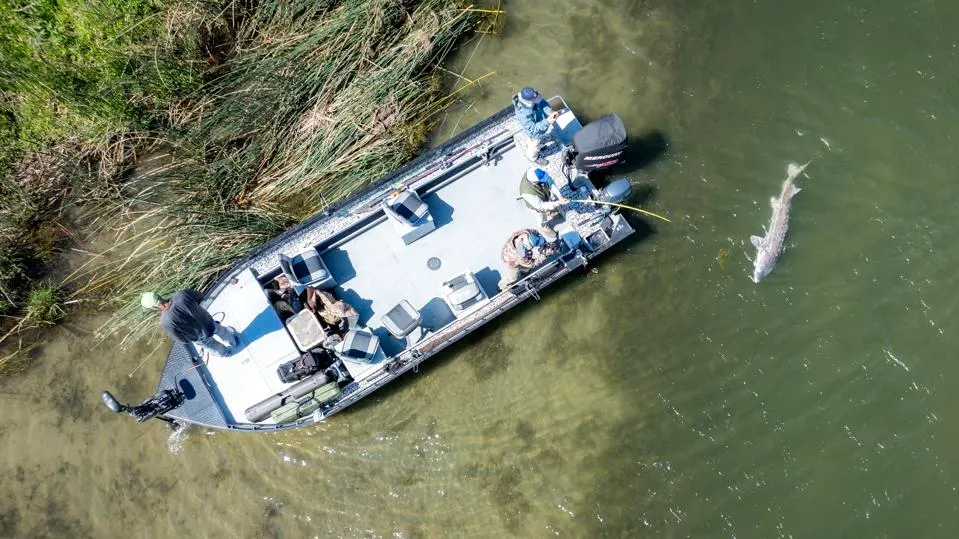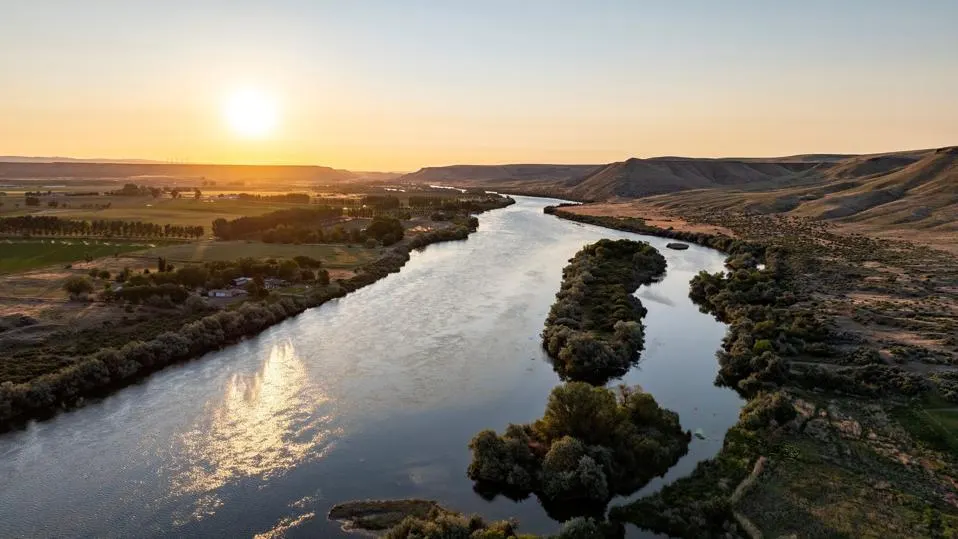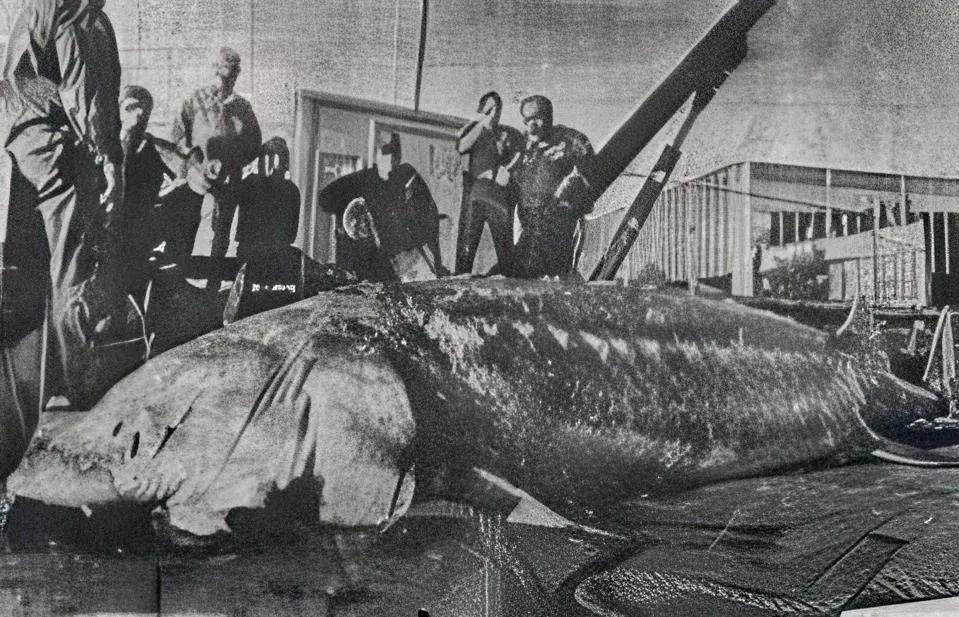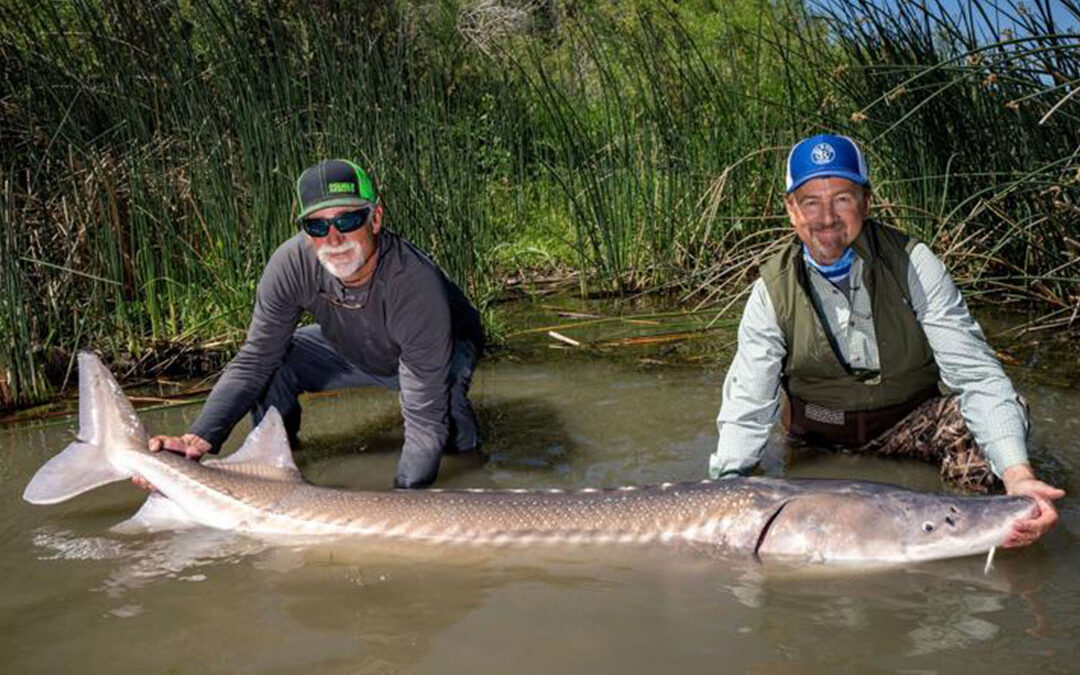After a 30-minute tug of war, finally seeing the bony plates of the prehistoric fish emerge from the murky depths of the Snake feels like uncovering the last surviving creature to slither out of the primordial ooze shortly after the Earth cooled.
The white sturgeon is the largest freshwater fish in North America, one of eight species of sturgeon that live in many lakes, rivers and estuaries across our continent.

Final moments as anglers reel in their catch of the day—a prehistoric sturgeon for which the Snake River is famous.
One of the largest ever recorded was caught in the Fraser River of British Columbia and stretched nearly 15 feet and weighed more than 1,500 pounds. Such a fish was undoubtedly more than a century old. Unconfirmed reports of fish up to 20 feet in length and weighing more than a ton have echoed over the generations as well, whispered to win bar bets in pubs from Pocatello to Portland.
Today, fish from 6-8 feet in length are the norm with only a rare few stretching past 10 feet. For guide Tim Parrish, introducing anglers from across the country to these Cretaceous leftovers is a labor of love.
When anglers get their first glimpse of the massive scaleless, shark-like fish, they are checking the box on one of America’s bucket list fishing experiences—that and getting an ultimate core workout with each fight. For Parrish, a personal passion for fishing Idaho’s smallmouth and sturgeon was inspiration enough to abandon his career as a pipefitter and embark on his radical sabbatical of guiding for these prized fish. He hasn’t looked back.

Guide Tim Parrish and outdoor industry veteran Steve Lamboy celebrate another sturgeon to the boat.
Parrish takes corporate and individual clients, baptizing them in all things sturgeon. He speaks of the fish in reverent tones, ever aware of the need to protect the species and the waters in which they live. After surviving all manner of Earth’s upheavals for so many millions of years, Parrish is adamant that the fish will not disappear on his watch.
While years of overfishing for the sturgeon’s prized meat and roe (caviar) took its toll on the species, modern efforts to monitor populations and regulate water levels of the Snake and Columbia Rivers, have helped stabilize white sturgeon populations in the region. That, and a strict catch-and-release policy on the Snake have given the fish sorely needed relief.
Sturgeon are nothing if not survivors, however. Build dams that cut them off from their sea-run life cycle and they still manage to adapt and persevere. You get the sense that they will still be here long after man has plundered his way to oblivion, homo sapiens being a mere blip in the history of sturgeon.

Despite dam construction on the Snake River that cut-off the sturgeon’s sea-run life cycle, the fish have managed to endure.
I join Parrish along with seasoned angler Steve Lamboy as we head to Parrish’s favorite sturgeon lairs in search of one of the leviathans. Step onto Parrish’s boat and he begins to narrate every facet of the experience, giving us the how’s and why’s behind all that he is doing from selecting a fishing location to rigging his stout rods. It’s just the kind of immersive tutorial most first-time sturgeon fisherman relish.
After affixing a piece of crappie—his favorite sturgeon bait—to the hooks of our pool cue sized rods, we chuck the baits overboard and wait for the party invitations to be answered. It isn’t long before one of the rods begins to twitch and, in a moment, makes the 45-degree bend of a pole being tortured by a slightly irritated—and large–fish.
It’s my sign to snatch the rod from the holder and begin the fight of my freshwater angling life. It’s a straightforward battle of brute force, no finesse necessary. Each time you hook one of these fish, the first thoughts that enter your mind are how big and how long will the fight last? Followed by, do I have enough gas in the tank?

One of the largest recorded sturgeon stretched 15-feet in length and weighed some 1,500 pounds.
Some 20 minutes later, an 8-foot beast finally rises to the surface, revealing the heavyweight at the end of the line. Such a fish is likely between 60 and 70 years old, says Parrish. As we release it back to the waters of the Snake, it seems to give Parrish a look of, you again?
Each of the 10 sturgeon we caught with Parrish in our two-day excursion brought its own unique fighting character and memories. Some jumped tarpon-like while others took us on sleigh rides of sorts, heading to the depths upriver in an attempt to free themselves from the tether of our lines and the modern world.
Catch one of these true river monsters, however, and it’s the angler—as much as the fish—that is hooked.

